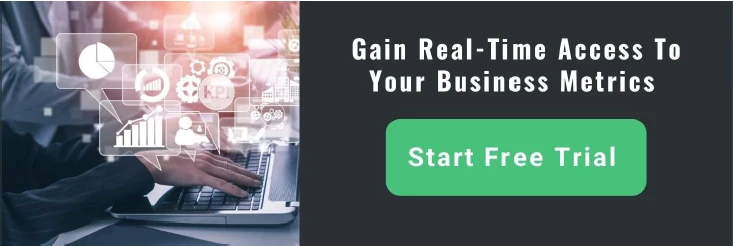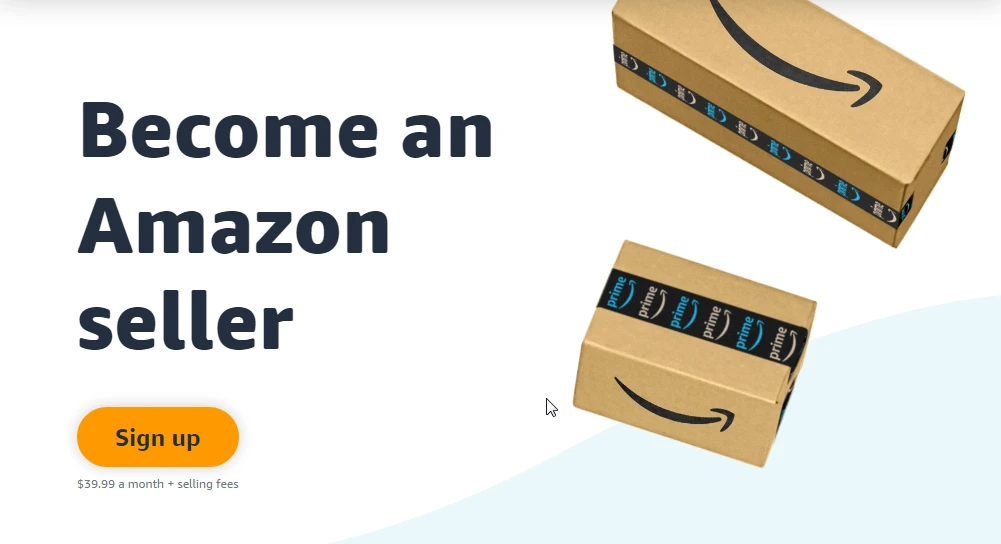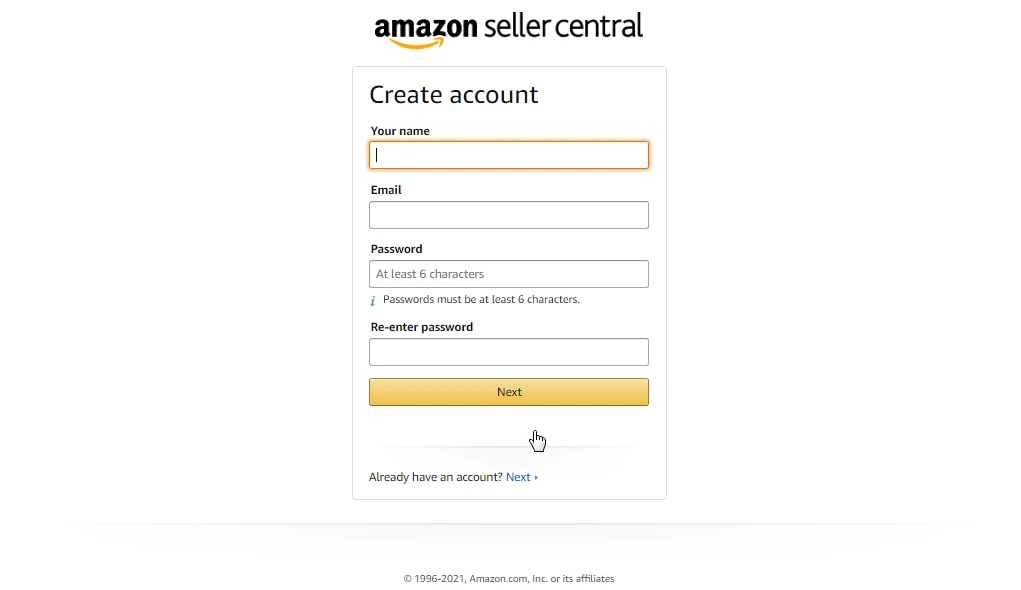May 22, 2025
Amazon Seller Marketplace: What It is, How It Works & Why Sell on It

Amazon Marketplace appears to be complex and multi-layered from the outside making first-time sellers feel downright intimidated. But as you delve deeper into it, with practice and experience, the marketplace begins to feel familiar and easy to maneuver.
Today, we’re going to help you break down the Amazon marketplace step by step. We’ll discuss how it works, why it’s an ideal platform to do business on, and everything in between. The table of contents below shows all the aspects of Amazon Marketplace that we’ll be covering in this blog.
-
What is Amazon Marketplace?
- When did Amazon Marketplace Start?
- Amazon Marketplace vs. Amazon.com
- Amazon Marketplace Selling Programs – An Overview
- How Much Does It Cost to Sell on Amazon Marketplace?
- How to Sell on Amazon Marketplace as a Beginner
- Seller App – Access Amazon Marketplace on the Go
- Pros and Cons of Selling on Amazon Marketplace
- How Safe is Amazon Marketplace
What is Amazon Marketplace?
The Amazon Seller Marketplace is an online shopping network integrated into amazon.com. The platform enables third-party retailers to list and sell new or used products directly to Amazon’s customers.
The marketplace is home to 1.9 million active sellers and sells 4000 products per minute. Because of so many 3P sellers, it offers customers a wide range of products to choose from.
Amazon initially started selling in the US but slowly expanded its operations with time. It has now 18 marketplaces scattered all across the globe including:
-
Amazon Marketplace US
-
Amazon Marketplace UK
-
Amazon Marketplace Canada
-
Amazon Marketplace India
-
Amazon Marketplace Australia, and more
When did Amazon Marketplace Start?
In November 2000, Amazon launched the Marketplace, an initiative to give other merchants the option to list their items on its digital shelves and sell to a global audience. Later, it evolved its offerings and started providing warehouses for sellers to store their inventory in return for a small fee.
In 2005, Amazon introduced Prime, a program that offered faster shipping and acted as a catalyst that transformed Amazon Marketplace and brought with it colossal growth. Since then, the number of sellers and buyers has continued to increase on the platform, with more than 2000 new sellers joining every day.
Despite the awe-inspiring tale of becoming the biggest name in the e-commerce world, Amazon remains one of the most customer-oriented companies in the world. As such, it also rewards brands that adopt the same customer-centricity when operating in any one of its marketplaces.
Amazon Marketplace vs. Amazon.com
Are Amazon Marketplace and Amazon.com any different in the way they operate?
Amazon is a customer service platform that offers consumers a large variety of products to choose from. On the flip side, Amazon Marketplace is more of a seller-service platform that lets individuals or businesses sell items at fixed rates.
To the average buyer, they appear the same—interlinked in a manner that makes it difficult to distinguish between the two. But as someone who plans to sell on Amazon, you need to be aware of what makes them so different.
Let’s learn more about the main differentiating factors between Amazon Marketplace and Amazon.com:
Profit distribution
When customers purchase from Amazon.com, Amazon keeps all the profits. But when a purchase happens on Amazon Marketplace, Amazon takes a fixed fee, and the rest of the profit goes to the third-party seller.
Product Ownership
Products sold on Amazon.com are owned by Amazon, whereas retail and private label brands own the products sold on Amazon Marketplace.
Eligibility
Amazon.com is an entirely native retail platform. No 3P seller is permitted to sell on it. In contrast, Amazon Marketplace is an open platform but with established eligibility criterias. Sellers need to reside in any one of the approved countries and possess a financial account within that jurisdiction to join the marketplace.
Amazon Marketplace Selling Programs – An Overview
There are two programs to look out for if you’re looking to sell on Amazon: i) The Vendor Central and ii) the Seller Central.
Vendor Central
Amazon Vendor Central is a program in which wholesalers or manufacturers sell their products in bulk to Amazon, which then proceeds to resell them on Amazon.com. This is an invite-only program in which merchants and distributors act solely as Amazon’s suppliers.
Sellers that sell via Vendor Central are called first-party or 1P sellers. Their products proudly flex the “ships from and sold by Amazon” label when listed on the website.
Seller Central
Amazon Seller Central is a digital dashboard offered to brands and merchants that want to market and sell products to Amazon’s customers directly. As a marketplace seller, you have to list, market, and handle your product all by yourself. In short, Amazon sets up the stage, now it's up to you to perform.

Sellers who sell via Seller Central have two fulfillment options: FBA and FBM. Which one should you choose and why?
Benefits of FBA
FBA stands for Fulfillment by Amazon. It allows sellers to send their products to Amazon warehouse, where the company’s employees then pick, pack, and ship the item(s) to a customer. Amazon also handles the A-Z of customer service under FBA. The benefits of FBA include:
-
Exposure to Prime: Prime members spend more on average on Amazon than non-Prime members. With FBA, sellers are granted access to the Prime program allowing them to access a market of more than 200 million Prime members right away.
-
Easy logistics handling: FBA eliminates the burden of logistics. Sellers only have to worry about sending their inventory to the warehouse and Amazon manages the storage, packaging, and shipping for them.
-
Customer trust: Buyers tend to trust sellers more who sell under FBA. They actively prefer them over non-FBA sellers.
-
Hassle-free customer service: FBA makes customer service hassle-free. Amazon’s trained team answers all customer queries and manages returns and refunds, providing sellers peace of mind.
Benefits of FBM
FBM or Fulfillment by Merchant is a fulfillment program offered by Amazon in which the merchant is responsible for managing the storage and logistics of their products. The benefits of FBM include:
-
Lower fees and higher margins: Sellers who sell via FBM don’t have to pay the extra storage and FBA fulfillment fee. If you play your cards right, this can help you generate higher profit margins.
-
Easy inventory access: FBM sellers have full control of their inventory. They can access it at any time, and if an issue pops up, they can get it replaced without needing Amazon’s approval.
-
SFP without FBA fees: Sellers who sell under FBM can qualify for Prime without paying any of the FBA costs. However, that’s easier said than done, as they must maintain exceptional account health and customer service metrics. Still, it’s worth trying.
How Much Does It Cost to Sell on Amazon Marketplace?
Next, let’s discuss the cost of selling on Amazon.
First, we have the selling plan fee. Amazon offers two types of selling plans, each priced differently:
-
Individual selling plan: Perfect for someone who wants to start small. This plan has no monthly subscription fee, but you must pay $0.99 to Amazon for each unit sale, plus other closing fees.
-
Professional selling plan: If you plan to sell more than 40 units a month, this could be the perfect option for you. It includes a 39.99$ monthly fee and other closing fees.
Then you have the referral fee. Usually, Amazon charges anywhere between 8% and 15% of your selling price in referral fee, depending on the product category.
There are also other types of fees you must pay when selling on Amazon. If you would like to learn about them, feel free to check out our seller fees guide.
However, if math isn’t your strong suit and you’d rather automate the entire process, then there’s no better ally than Shopkeeper—a reputable Amazon profitability dashboard that’s capable of combining 72 different types of seller fees and simplifying the seller process!

How to Sell on Amazon Marketplace as a Beginner
So you’ve finally decided to sell on Amazon Marketplace. After all, it’s a great way to start a side-hustle and turn it into a potential full-time source of income. But how do you get started? By following these steps!
Viable Business Models on Amazon
First things first, you must understand the different business models on Amazon. Here are the most popular ones:
-
Retail arbitrage: Retail arbitrage is an entry-level Amazon business model that involves buying goods from retail stores at reduced prices and selling them at a higher value on Amazon.
-
Wholesale: In wholesale, you purchase products in bulk from already established brands and sell them on Amazon for a good profit. To be successful at wholesale, you must dig deep to find products with high demand and good sales history.
-
Private label: Private Label is our personal favorite and one that we would recommend. It consists of manufacturing your own product under your own brand name. Most private label sellers outsource their product manufacturing to factories in China to reduce their inventory cost and maximize profits.
Aside from these, you can also try other models like selling used items, selling via handmade, print on demand, etc.
Steps for Selling on Amazon
Once you’ve decided on how you want to sell on Amazon, begin following these steps:
Step1: Find a product
This is by far the most crucial part of your Amazon journey. Carry out extensive research to find the ideal product. Make sure it has less competition, healthy profits margins, and scope for improvement and differentiation.
Step 2: Create an account
Next, create your Amazon account. We explain this in detail in the next section.
Step 3: Find a supplier
Find a supplier for your product. Negotiate and place the order.
Step 4: List your product
List your product on the Amazon marketplace. Need a step-by-step tutorial? Check out our How to list products on Amazon guide.
Step 5: Come up with a launch strategy
Plan a solid launch strategy. It should consist of both short-term and long-term goals and how to achieve them. Think about how to bring reviews to your product listing, what keywords need to be targeted for PPC campaigns, which channel will benefit you the most outside of Amazon, etc.
How Do I Set Up an Amazon Marketplace Account?
You can create an Individual or Professional selling account on Amazon. Here’s how to get started:
-
Go to Amazon.com and scroll to the bottom of the page. Under the Make Money with Us section, click “Sell products on Amazon”. Alternatively, you can go to sell.amazon.com and select “Sign Up” to register on the marketplace.

2. Amazon will redirect you to the account creation page. Enter your personal and/or your business’s information, such as name, address, phone number, bank details, utility bills, photo ID, tax information, etc. Complete the fields and submit your application for review.

3. The review process can take anywhere from a couple of days to a few weeks. Rest assured, you should receive the verification email from Amazon at your registered email address.
Pro Tip: Make sure the name, number, and address match in all your documents; otherwise, Amazon may reject your application.
How Do Sellers Get Paid on Amazon Marketplace?
Amazon pays sellers via a bank transfer. These payments are released every two weeks for all the orders successfully shipped in the last 14 days. Amazon automatically deducts any pending expenses from your final payment. The transfer usually takes up to 5 days to show up in your account.
Seller App – Access Amazon Marketplace on the Go
You can also access Amazon Marketplace on your mobile using the Seller app. Produced by the Amazon team, this app helps manage the selling process anytime, anywhere. Track your sales, fulfill orders, respond to customer questions, create listings, and accomplish much more from your phone.
Pros and Cons of Selling on Amazon Marketplace
All things have their positives and negatives, and Amazon is no different. Here are a few pros and cons of selling on Amazon Marketplace.
Pros
-
It has a low barrier to entry, which means there are minimal requirements if you want to sell.
-
Amazon has a huge customer base, with lots of hot leads all ready to buy from you. All you need to do is get their attention.
-
You don’t need to have a big marketing budget to be successful on Amazon.
-
With the right strategy and a quality product, you can grow your sales exponentially.
-
With the right strategy and a quality product, you can grow your sales exponentially.
Cons
-
There is a chance that unethical sellers may hijack your listing and claim your product as their own. However, you can protect yourself against such risks by enrolling in the Amazon Brand Registry program.
-
Amazon is famous for its strict policies and TOS. Sometimes, these can be tricky and hard to keep up with. If you break even a single policy, your listing might get suspended.
-
Making sure your products are visible can be tough on Amazon as most niches are highly competitive.
How Safe is Amazon Marketplace
Amazon Seller Marketplace is safe for both buyers and sellers as sellers’ personal or monetary information is not disclosed to others. Neither does the company use the data for any foul practices. You can even assign regulated access to your VA in case they are managing your account.
Conclusion
To sum it up, Amazon Seller Marketplace provides a great opportunity for the masses to earn extra cash (or even make a full-time income). Third-party selling on Amazon is all about identifying the benefits and disadvantages of each Amazon business model and deciding which fits you best. Once you have chosen the perfect strategy for your business, stick to it and keep working towards your goal.
What next? Read our Is Selling on Amazon Worth It in 2021 guide to get a factual outlook on the current state of the Amazon market!



